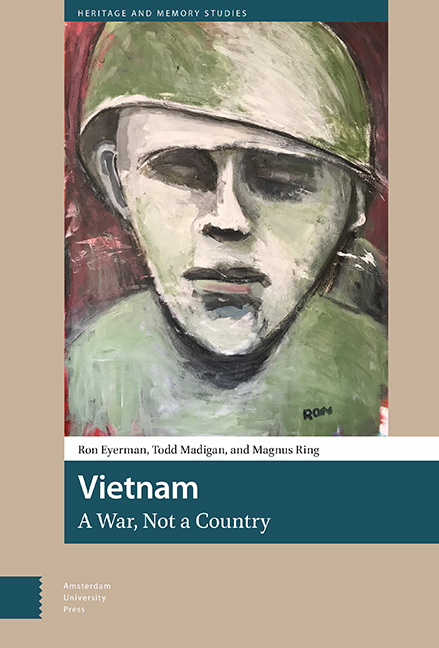Book contents
- Frontmatter
- Table of Contents
- Preface
- 1 Introduction: Cultural Trauma and the American-Vietnamese War
- 2 Cultural Trauma and Vietnamese Arenas of Memory
- 3 The Trauma of Vietnam: The American Perspective
- 4 Journey From the Fall
- 5 Cultural Trauma and Vietnamese-American Arenas of Memory
- 6 Conclusion: War, Trauma, and Beyond
- Index
2 - Cultural Trauma and Vietnamese Arenas of Memory
Published online by Cambridge University Press: 29 November 2023
- Frontmatter
- Table of Contents
- Preface
- 1 Introduction: Cultural Trauma and the American-Vietnamese War
- 2 Cultural Trauma and Vietnamese Arenas of Memory
- 3 The Trauma of Vietnam: The American Perspective
- 4 Journey From the Fall
- 5 Cultural Trauma and Vietnamese-American Arenas of Memory
- 6 Conclusion: War, Trauma, and Beyond
- Index
Summary
Abstract
After a brief historical background, this chapter explores the meaning and collective memory of the American-Vietnamese War as it is represented and displayed in Vietnamese war museums. The official narrative of these museums is the focal point of the analysis. The founding narrative celebrates the collective struggle against colonial domination, one that includes the war against the Americans. We discuss how the Vietnamese of the Socialist Republic of Vietnam have created memorial sites and ceremonies to represent this narrative of national liberation through violent struggle against more powerful enemies. Their narrative focuses on the forcefulness of long-term resilience and collective will. As other narratives exist, the dominant heroic narrative expressed in official museums and memorials is contrasted by examples from the arena of the arts and ancestor worshiping.
Keywords: Collective memory, Vietnamese history, war museums, commemoration, the American-Vietnamese War
April 30, 1975: The Moment of Triumph
On April 29, 1975, the North Vietnamese army initiated a heavy artillery bombardment in order to prepare its final attack on Saigon (now called Ho Chi Minh City, Thành phố Hồ Chí Minh). By April 30, the last line of defense northeast of Saigon broke down and the North Vietnamese army advanced. In a matter of hours, they took control over most of the strategic places in Saigon, including the presidential palace. A North Vietnamese T-54B tank, which later became iconic, broke the gates of the palace—a symbolic instance famously depicted by the war photographer Francoise Demulder. Saigon had fallen, and the war was over. Earlier that month, on April 21, President Nguyen Van Thieu of South Vietnam had resigned and was eventually replaced by General Minh, who on this day was serving his third and what would be his last day in office. Somewhat remarkably, there were no massacres and no ad hoc actions of revenge that day, and the takeover is generally described as being made in good order. This can partly be explained by the discipline that now marked the North Vietnamese Army (Hägerdal, 2005) but surely also by the fact that there was no longer any major resistance and that as many as 7,800 Americans and South Vietnamese had already been evacuated in the previous days.
- Type
- Chapter
- Information
- Vietnam, A War, Not a Country , pp. 41 - 102Publisher: Amsterdam University PressPrint publication year: 2023



